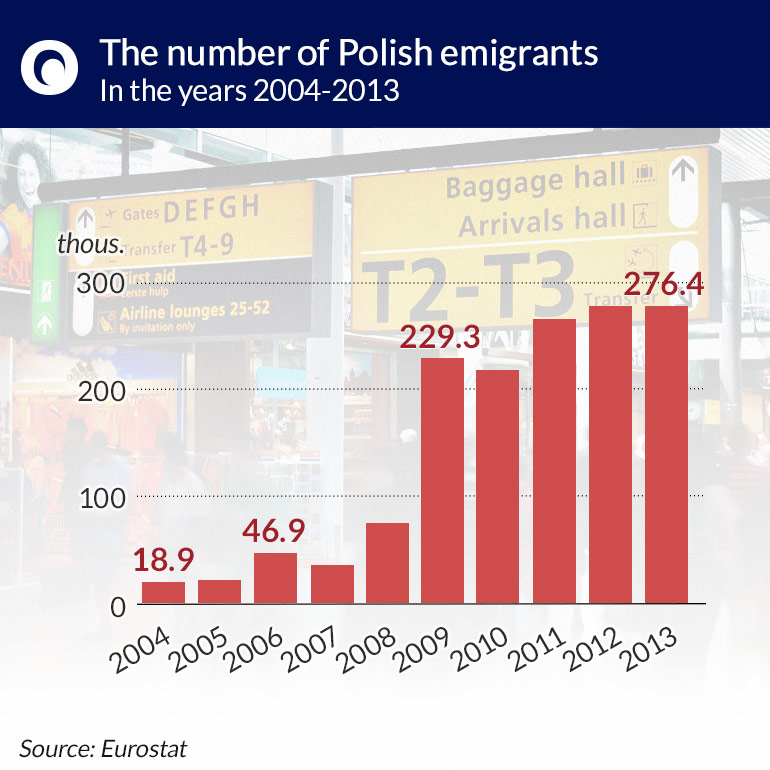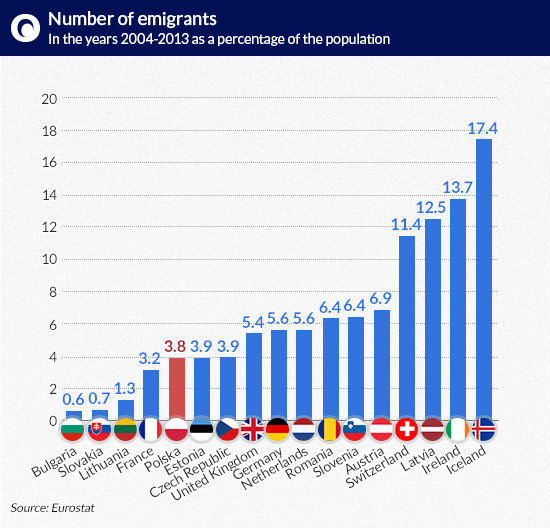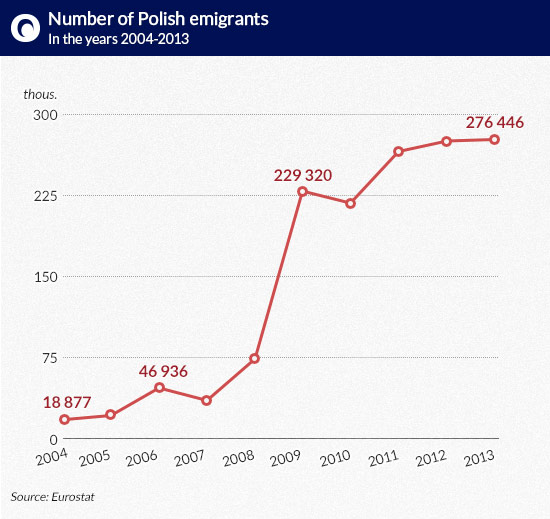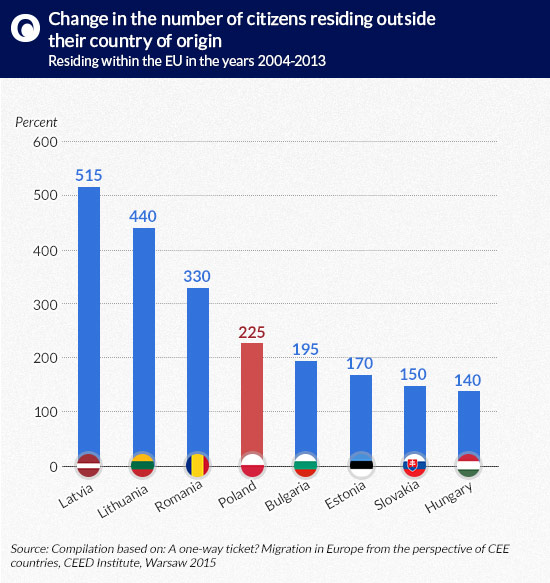Tydzień w gospodarce
Category: Trendy gospodarcze
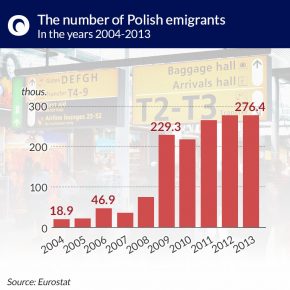
(infographics: Dariusz Gąszczyk)
Some other examples: „A city the size of Berlin – 3.4 million native Germans have emigrated and more than 140,000 German citizens leave every year”, states the OECD’s „Talent Abroad. A Review of German Emigrants” report of 2011. „Come back Leon”, proclaims the French advertising campaign persuading emigrants to return to their homeland. „It is estimated that as many as approx. 2 million French people are living abroad, 60,000 to 80,000 leave annually, and half of those who have stayed abroad for longer than 6 years do not intend to come back”.
In the modern world, migration is becoming a mass phenomenon, occurring not only in the poor and underdeveloped economies, but also in countries with decent average living standards. People are moving not only in search of work which would allow them to satisfy their most basic material needs, but also to satisfy their career aspirations, gain experience and simply because of their curiosity for the world. Freedom of movement within the European Union and the possibility of communicating with relatives remaining in the country on the Internet or by telephone are factors that make the decision about emigration easier and quicker. The separate issue is an emigration associated with the political situation, directly threatening the lives and security of citizens.
In Poland many believe that, due to the high unemployment rate and low wages, economic factors are pushing people out of the country and that we are unique in Europe in that regard. The cited figures – in the range of 1.5 to 2.5 million emigrants – are indeed impressive. But does this apply exclusively to Poland? According to Eurostat data, more than 4.5 million Germans, nearly 3.5 million Britons, nearly 3 million Spaniards and more than 2 million French people emigrated in the years 2004-2013. The same source estimates that approx. 1.5 million people left Poland during the same period. We are therefore not the leader in terms of emigration, even taking into account the data of the Polish Central Statistical Office, which estimated the number of Polish emigrants at more than 1,880,000.
The data on emigration draws a slightly different picture when we compare it with the population of the country in question.
In relation to the overall size of the population, Poland falls below the European average. In relative terms, the British (5.4%), Germans (5.6%), Slovenians, the Swiss, Romanians and Austrians (above 6%) all leave their countries at higher rates. By far the highest emigration rates were recorded in Ireland (13.7%) and Iceland (17.4%).
The two most important things from the point of view of the economy’s development prospects and especially the possible risk of labour shortages, are the dynamics of the phenomenon – the long-term increase, stabilization or decrease in emigration trends in a society, and the difference between the number of incoming migrants and the number of people emigrating, known as net migration.
When analysing the phenomenon of emigration from the point of view of its dynamics, it is impossible to talk of a growing wave of Polish emigration.
After Poland’s accession to the EU, emigration increased gradually and surged rapidly in the years 2008-2009, which was largely associated with the opening of the European labour markets to Poles. In subsequent years, and especially after 2011, when all the EU member states opened their markets to Polish workers, the rate of emigration stabilized (in the years 2011-2013 approx. 270,000 people emigrated from Poland per year). And although it is quite a significant number, the important thing is that it has not increased in the recent years.
By contrast, there are countries in which the emigration process has accelerated significantly in the recent years. This is happening, among others, in Spain, where over the past decade, as a result of the 2007-2009 crisis, the number of emigrants increased by over 2.5 times, from about 200,000 in 2007 to over 530,000 in 2013. Since 2008 a similar phenomenon has been observed in Hungary, where the number of people leaving is also increasing from year to year (a little over 3,000 Hungarians emigrated annually before accession to the EU, whereas in 2013 almost 35,000 people left the country).
Despite the significant increase in the number of people leaving Poland after 2004, we are not the leader in terms of growth of people living outside of their country of origin within the European Union. In the years 2004-2013 significantly greater changes in the number of emigrants residing within the EU occurred in Latvia, whose population of emigrants increased by 550%, Lithuania – with an increase of 440%, and Romania – with an increase of 330%. In terms of the increase in the number of emigrants residing within the EU, Poland ranked slightly below the average for the countries of our region – with an increase of 225% in the years 2004-2013.
The second factor associated with migration – important from the point of view of the economic development – is net migration, that is, the difference between the number of immigrants and emigrants. Both an excessive outflow of citizens as well as an increased influx of immigrants may become a significant social, economic and political problem. EU countries are facing these problems today. In recent years, countries such as Italy have experienced an influx of tens of thousands of refugees from North Africa, becoming the leader in terms of net positive migration rate. Germany, Spain and France are facing similar problems.
